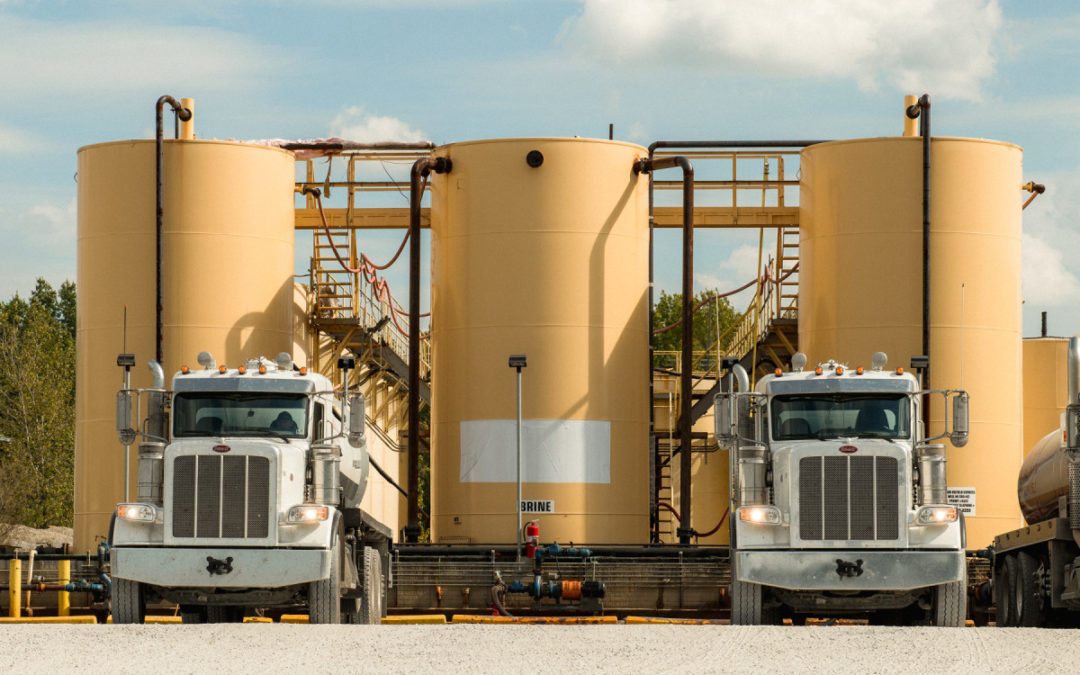SOURCE: Rolling Stone
DATE: January 21, 2020
SNIP: Oil fields across the country — from the Bakken in North Dakota to the Permian in Texas — have been found to produce brine that is highly radioactive. “All oil-field workers,” says Ian Fairlie, a British radiation biologist, “are radiation workers.” But they don’t necessarily know it.
The Earth’s crust is in fact peppered with radioactive elements that concentrate deep underground in oil-and-gas-bearing layers. This radioactivity is often pulled to the surface when oil and gas is extracted — carried largely in the brine.
Radium, typically the most abundant radionuclide in brine, is often measured in picocuries per liter of substance and is so dangerous it’s subject to tight restrictions even at hazardous-waste sites. The most common isotopes are radium-226 and radium-228, and the Nuclear Regulatory Commission requires industrial discharges to remain below 60 for each.
“It’s ridiculous that these drivers are not being told what’s in their trucks,” says John Stolz, Duquesne’s environmental-center director. “And this stuff is on every corner — it is in neighborhoods. Truckers don’t know they’re being exposed to radioactive waste, nor are they being provided with protective clothing.
“Breathing in this stuff and ingesting it are the worst types of exposure,” Stolz continues. “You are irradiating your tissues from the inside out.” The radioactive particles fired off by radium can be blocked by the skin, but radium readily attaches to dust, making it easy to accidentally inhale or ingest. Once inside the body, its insidious effects accumulate with each exposure. It is known as a “bone seeker” because it can be incorporated into the skeleton and cause bone cancers called sarcomas. It also decays into a series of other radioactive elements, called “daughters.” The first one for radium-226 is radon, a radioactive gas and the second-leading cause of lung cancer in the U.S. Radon has also been linked to chronic lymphocytic leukemia.
Tanks, filters, pumps, pipes, hoses, and trucks that brine touches can all become contaminated, with the radium building up into hardened “scale,” concentrating to as high as 400,000 picocuries per gram. With fracking — which involves sending pressurized fluid deep underground to break up layers of shale — there is dirt and shattered rock, called drill cuttings, that can also be radioactive. But brine can be radioactive whether it comes from a fracked or conventional well; the levels vary depending on the geological formation, not drilling method. Colorado and Wyoming seem to have lower radioactive signatures, while the Marcellus shale, underlying Ohio, Pennsylvania, West Virginia, and New York, has tested the highest. Radium in its brine can average around 9,300 picocuries per liter, but has been recorded as high as 28,500. “If I had a beaker of that on my desk and accidentally dropped it on the floor, they would shut the place down,” says Yuri Gorby, a microbiologist who spent 15 years studying radioactivity with the Department of Energy. “And if I dumped it down the sink, I could go to jail.”
The advent of the fracking boom in the early 2000s expanded the danger, saddling the industry with an even larger tidal wave of waste to dispose of, and creating new exposure risks as drilling moved into people’s backyards. “In the old days, wells weren’t really close to population centers. Now, there is no separation,” says City University of New York public-health expert Elizabeth Geltman. In the eastern U.S. “we are seeing astronomically more wells going up,” she says, “and we can drill closer to populations because regulations allow it.” As of 2016, fracking accounted for more than two-thirds of all new U.S. wells, according to the Energy Information Administration. There are about 1 million active oil-and-gas wells, across 33 states, with some of the biggest growth happening in the most radioactive formation — the Marcellus. And some regulations have only gotten weaker. “Legislators have laid out a careful set of exemptions that allow this industry to exist,” says Teresa Mills of the Buckeye Environmental Network, an Ohio community-organizing group. “There is no protection for citizens at all — nothing.”
[The full story at Rolling Stone is horrific. I urge you to read the whole thing.]

